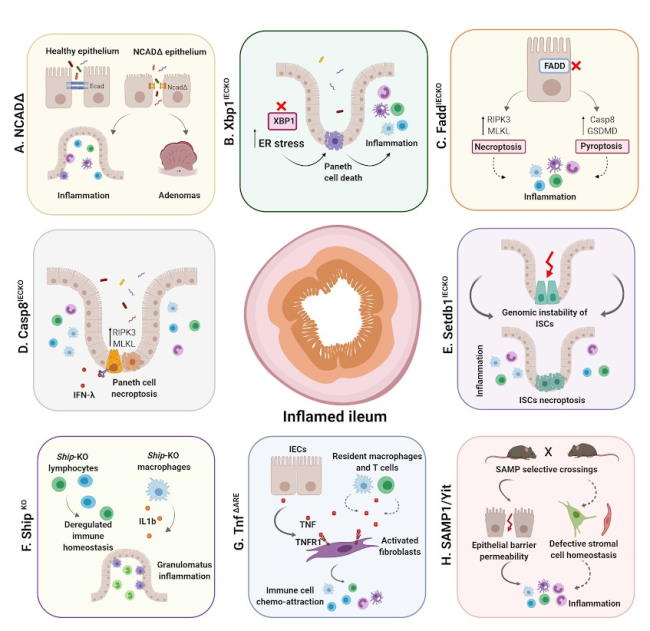PhD student Lida Iliopoulou and George Kollias published a review article in Mucosal Immunology, in which they critically evaluate murine models of Crohn’s disease – ileitis.
PhD student Lida Iliopoulou and George Kollias published a review article in Mucosal Immunology, in which they critically evaluate murine models of Crohn’s disease – ileitis, highlight their similarities to human disease and discuss their significance towards the development of novel targeted and personalized therapies. [pubmed]


Harnessing murine models of Crohn’s disease ileitis to advance concepts of pathophysiology and treatment
Crohn’s disease (CD) and ulcerative colitis (UC), two forms of inflammatory bowel disease (IBD), are both characterized by chronic inflammation and severe dysfunction of the gastrointestinal tract. However, they represent distinct clinical disorders with diverse driving mechanisms, which is not reflected in currently approved therapeutics for these diseases. Thus, there is a compelling need to understand the mechanistic basis for this divergence in order to develop more effective and specialized therapies.
To that end, animal models provide valuable platforms for studying IBD heterogeneity and deciphering disease-specific mechanisms. The review discusses in a comprehensive and integrated manner, all the available spontaneous murine models of Crohn’s Disease ileitis focusing on the various triggering mechanisms, the divergent ensuing pathophysiology and the similarities to human CD. Renewed interest in mechanisms driving CD ileitis in animal models came from a recently reported ileitis model that introduces the genome instability in the intestinal stem cells as a novel mechanism causally implicated in the development of disease. Specific focus is also placed on the distinct drivers of epithelial cell death execution between colon and ileum, described in recent literature as well as the complex immune-stromal cell crosstalk that could potentially reveal a CD-specific signature. Additional critical aspects of the disease reflected in the currently used preclinical models of CD ileitis, which are thoroughly discussed, include the epithelial barrier dysfunction, the host-microbiota interplay and the stromal cell activation that leads to the perpetuation of chronic ileal inflammation through diverse pathways. Overall, the authors aim to critically evaluate the mechanistic underpinnings of murine models of CD-ileitis and discuss their phenotypic similarities to human disease envisaging their further exploitation for the development of novel targeted and personalized therapeutics.
Review Article: Harnessing murine models of Crohn’s disease ileitis to advance concepts of pathophysiology and treatment. Iliopoulou L and Kollias G. Mucosal Immunology 2021, Jul 27. https://doi.org/10.1038/s41385-021-00433-3
Full paper available here: https://rdcu.be/cp0zh